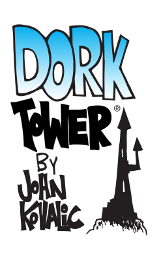Ken and Robin Consume Media: Snowy Witches, an Evil Cat, and a History of Crime Fiction
October 21st, 2025 | Robin

Ken and Robin Consume Media is brought to you by the discriminating and good-looking backers of the Ken and Robin Talk About Stuff Patreon. Each week we provide capsule reviews of the books, movies, TV seasons and more we cram into our hyper-analytical sensoriums. Join the Patreon to help pick the items we’ll talk about in greater depth on a little podcast segment we like to call Tell Me More.
Recommended
Evil Cat (Film, Hong Kong, Dennis Yu, 1987) When his nemesis, a body-possessing feline spirit, emerges for its its semi-centennial rampage, a dying wizard (Chia-Liang Liu) hastens to train a young chauffeur (Mark Ho-nam Cheng) as his successor. Pell-mell ghost action comedy dishes up all the genre-hopping, tone-shifting and extreme lighting of its period, while toning down the broad schtick by a notch or two.—RDL
A Quiet Place: Day One (Film, US, Michael Sarnoski, 2025) A despondent cancer patient (Lupita Nyong’o) attempts to survive an invasion of NYC by sound-seeking alien monsters while saddled with an anxious law student (Joseph Quinn.) A rich cinematic text layered with references and resonances, this horror disaster movie stands as the best prequel ever made, taking only what it needs from the franchise it extends.—RDL
The Snow Woman (Film, Japan, Tokuzô Tanaka, 1968) An apprentice woodcarver (Akira Ishihama) does not suspect that his loving wife (Shiho Fujimura) is the killer frost spirit who, struck by his handsomeness, once broke the rules to spare his life. Simple, sublime practical effects underline the beauty and horror of this Lafacadio Hearn adaptation.—RDL
The Story of Classic Crime in 100 Books (Nonfiction, Martin Edwards, 2017) Edwards charts the development of the mystery genre from 1901 to 1950 in 100 (actually 102) book essays. Each entry provides a spoiler-free plot hook, a note on the work’s influence in the genre (the criterion for inclusion is a book’s importance more than its pure merit), and a brief summary of the author’s career, making it a trifle crowded and necessarily incomplete on all those fronts. Fortunately each chapter (they begin historical and turn thematic) provides more context and more titles; only Edwards’ parochial neglect of American authors (5 out of 102, 6 counting John Dickson Carr) mars this handsome and useful work.—KH
The White Reindeer (Film, Finland, Erik Blomberg, 1952) Anxious for her new husband (Kalervo Nissilä) to quickly return from the snowy uplands, a young woman (Mirjami Kuosmanen) performs an ill-considered sacrifice, becoming a murderous witch able to assume the form of a white reindeer. Horror folk tale told with an ethnographic simplicity.—RDL
Good
Litan (Film, France, Jean-Pierre Mocky, 1982) During a village festival revolving around the wearing of creepy masks, a frightened woman (Marie-José Nat) tries to avert her nightmare premonition of her surveyor boyfriend’s (Jean-Pierre Mocky) death. Despite its epic body count, this dreamlike excursion into reality horror is more about surrealism than scares. Easily repurposed into a Yellow King scenario.—RDL
Okay
Hammer: Heroes, Legends and Monsters (Film, UK, Benjamin Field, 2024) Interview subjects provide comprehensive info on Hammer Films’ creative phases and personnel, but are undercut by distracting visual devices and cutaways. Worse for a film history documentary, the clips are carelessly chosen or used as gags.—RDL














